Exploring Dehua Kiln Sites: The Heart of Chinese Porcelain Production
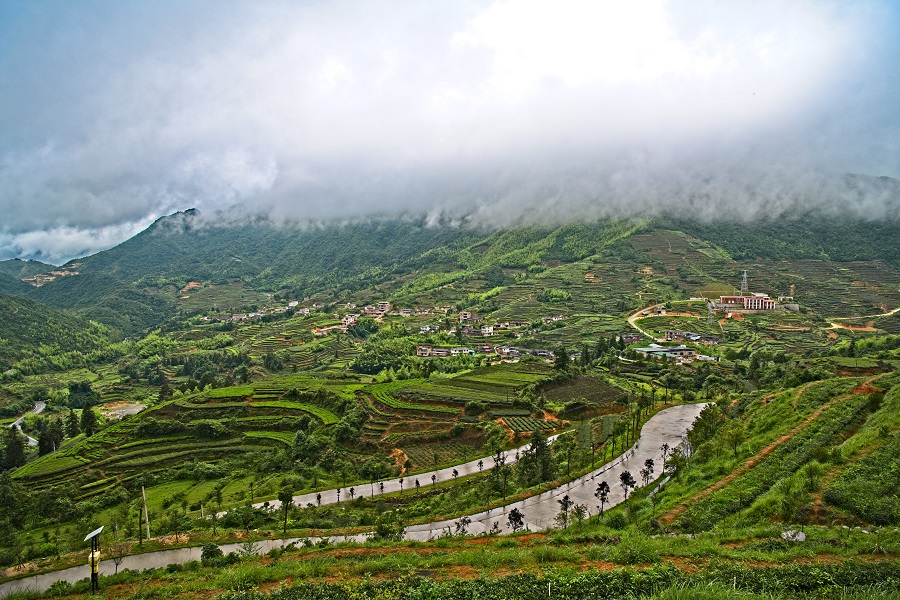
An Essential Guide to Visiting Dehua Kiln Sites
Nestled in the charming landscapes of Dehua County, Fujian Province, the Dehua Kiln Sites stand as a testament to centuries of porcelain craftsmanship that has captivated collectors and enthusiasts across the globe. Known as the “Porcelain Capital of China,” Dehua’s storied history is intricately woven into the delicate white ceramics that emerged from these very kilns, particularly during the 18th and 19th centuries.
As you venture into this enchanting destination, prepare to immerse yourself in a world where ancient traditions meet modern artistry. The kilns, with their unique dragon kiln design—a long and slender structure built into the hillside—are not only a marvel of engineering but also a window into the artisanal techniques that have been painstakingly preserved through generations. Visitors are often surprised to find these historical sites tucked away in unexpected locales, like schoolyards, where English signage guides you through the rich narrative of Dehua’s porcelain legacy.
This guide will navigate you through the essential experiences at the Dehua Kiln Sites, highlighting not just the kilns themselves, but the vibrant culture, stunning natural landscapes, and the intricate stories behind the exquisite ceramics that continue to enchant the world. Whether you’re an avid collector, a cultural explorer, or simply curious about the artistry of porcelain, Dehua promises an unforgettable journey through its rich heritage.
In This Guide
- An Essential Guide to Visiting Dehua Kiln Sites
- The Rich History and Legends of Dehua Kiln Sites
- Main Highlights: What You Absolutely Can’t Miss
- Planning Your Visit: A Practical Guide
- Tickets: Prices, Booking, and Tips
- How to Get There: A Complete Transportation Guide
- Local Cuisine and Accommodation Nearby
- Frequently Asked Questions
- Final Thoughts on Your Trip
The Rich History and Legends of Dehua Kiln Sites
Nestled in the picturesque landscapes of Dehua County in Fujian Province, the Dehua Kiln Sites are steeped in a rich tapestry of history and legend that captivates both ceramic enthusiasts and casual travelers alike. Known as the “Porcelain Capital of China,” Dehua has been a pivotal center for porcelain production since the Song Dynasty (960-1279 AD). The kilns here have been instrumental in shaping the artistic and cultural identity of Chinese ceramics, particularly through the creation of the renowned “blanc de Chine” porcelain—an exquisite white ceramic that has dazzled collectors around the globe since the 19th century.
The most iconic of these kilns is the dragon kiln, named for its elongated, serpentine structure that climbs the hillside. This architectural marvel was designed to efficiently fire large quantities of ceramics at once, a technique that not only optimized production but also contributed to the distinct qualities of Dehua porcelain. The dragon kiln represents a historical innovation, allowing artisans to produce pieces that not only showcased their exceptional craftsmanship but also met the growing demands of both domestic and international markets.
Throughout the centuries, the Dehua kilns have witnessed numerous transformations, evolving through various dynasties. During the Ming (1368-1644) and Qing (1644-1912) dynasties, the kilns flourished as demand surged, with artisans experimenting with new glazing techniques and decorative styles. The allure of Dehua porcelain reached far beyond China’s borders, captivating foreign collectors and inspiring an array of artistic movements in Europe and beyond. This period solidified Dehua’s reputation, as the unique translucency and luminous quality of its ceramics became highly sought after.
In addition to its historical significance, the Dehua Kiln Sites are steeped in local legends, which add an enchanting layer to their allure. One such tale speaks of a master potter who, inspired by the beauty of the surrounding mountains, discovered a secret clay that turned out to be the key ingredient for creating the finest porcelain. This legend symbolizes the deep connection between the natural landscape and the artistic expression found in Dehua ceramics, demonstrating how nature and culture intertwine in this region.
Today, visitors to Dehua can explore these ancient kiln sites, marveling at the craftsmanship that has endured through the ages. The well-preserved dragon kiln, often nestled within a schoolyard, offers an intimate glimpse into the past, drawing curious travelers to witness the legacy of porcelain making firsthand. With English signage available, international visitors can appreciate the significance of these historical sites, all while capturing memories through photographs of the stunning ceramics that continue to inspire awe.
As you wander through the Dehua Kiln Sites, you are not just stepping into a place of production; you are immersing yourself in a narrative that transcends time, where the magic of porcelain and the whispers of history coalesce, inviting you to partake in its enduring story.

Dehua Kiln Sites.
Main Highlights: What You Absolutely Can’t Miss
When exploring the enchanting Dehua Kiln Sites, there are several key highlights that you simply cannot miss. This charming region in Fujian Province is not only steeped in history but also brimming with cultural significance, particularly known for its exquisite porcelain production. Here’s what you should prioritize on your visit:
1. The Historic Dragon Kiln
Nestled within a local schoolyard, the well-preserved Dragon Kiln is a fascinating piece of history. This long, narrow kiln, built climbing up a hillside, is renowned for its role in producing Dehua porcelain, also known as Blanc de Chine. Visitors will appreciate the informative signage available in English, making it easy to understand the kiln’s significance and the craftsmanship involved. Don’t forget to snap some photos; the kiln’s unique structure is a captivating sight!
2. Dehua Ceramics Museum
A visit to the Dehua Ceramics Museum is a must for anyone interested in porcelain culture. Situated within the scenic Tangzhaishan Forest Park, this museum is the first of its kind in Fujian and houses over 5,000 pieces of Dehua ceramics. The exhibits trace the evolution of porcelain from the Song and Ming dynasties to modern designs, giving visitors a deep dive into the artistic and technical aspects of this beautiful craft.
3. Ancient Kiln Sites and Workshops
The Dehua region is dotted with ancient kilns that date back hundreds of years. Many of these sites still operate, showcasing traditional wood-firing methods that produce unique ceramic pieces. Engaging with artisans in these workshops provides an authentic glimpse into the time-honored techniques that define Dehua porcelain. Some workshops even offer live demonstrations, allowing you to witness the entire process from clay preparation to glazing and firing.
4. Jiuxian Mountain Scenic Area
For those who appreciate natural beauty, the Jiuxian Mountain Scenic Area is a breathtaking destination just 35 kilometers from Dehua. Known for its mystical rock formations and rich Taoist legends, this area inspires many ceramic designs. As you explore the scenic trails, you’ll discover how local artisans draw inspiration from these natural wonders to create their porcelain masterpieces.
5. Shiniu Mountain National Geopark
This stunning geopark is famous for its unique volcanic landforms and rich biodiversity. Shiniu Mountain not only serves as a source of inspiration for ceramic designs but also provides essential clay resources for porcelain production. Keep an eye out for souvenir ceramics that feature motifs inspired by the mountain’s remarkable shapes—these are perfect mementos of your visit.
6. Yunlong Valley
Known as a natural “oxygen bar,” Yunlong Valley boasts pristine waterfalls, lush forests, and traditional villages. This serene environment is home to local artisans crafting beautiful ceramic tea sets and coffee mugs. The valley’s tranquility and artistic spirit make it an ideal spot for those looking to purchase unique products while enjoying the landscape.
7. Local Culinary Delights
While exploring the Dehua Kiln Sites, take the opportunity to indulge in the local cuisine. There are several nearby restaurants, such as PaPa ZhenWei and Cha WuYu, where you can savor authentic Fujian dishes. This culinary experience complements your cultural exploration, making for a well-rounded visit.
8. Connecting with Local Artisans
Engage with the local artisans to understand their craft more intimately. Many workshops welcome visitors, offering insights into their creative processes and allowing you to ask questions about the intricacies of porcelain making. This personal connection enhances the appreciation for the beautiful pieces you may wish to take home.
Dehua’s kiln sites offer a rich tapestry of history, artistry, and natural beauty. Whether you’re a ceramic enthusiast or a curious traveler, these highlights ensure a memorable visit to this remarkable region.
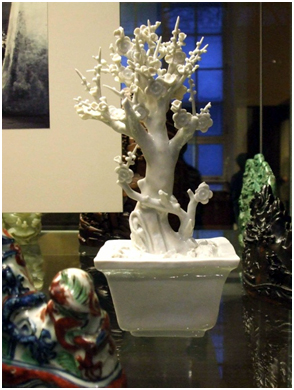
Dehua Kiln Sites.
Planning Your Visit: A Practical Guide
Your Guide to Visiting Dehua Kiln Sites
Dehua County, nestled in Fujian Province, China, is renowned as the “Porcelain Capital of China.” Visiting the Dehua Kiln Sites, particularly the well-preserved Dragon Kiln, offers an immersive experience into the rich tradition of porcelain production that has captivated collectors and artisans alike for centuries. Here’s how to make the most of your visit.
Getting There
Location:
The Dehua Kiln Sites are located in Baomei Village, Xunzhong Town, Dehua County. The nearest major city is Quanzhou, from where you can easily access Dehua.
Transportation Options:
– By Train: Take a train from Quanzhou to Dehua County. The journey typically takes about an hour.
– By Bus: There are regular buses from Quanzhou to Dehua, which are economical and convenient.
– By Car: If you prefer driving, you can hire a car. The scenic route through Fujian’s mountainous landscapes is quite picturesque.
Opening Hours
While specific hours may vary, the Dehua Kiln Sites are generally open from 9:00 AM to 5:00 PM. It’s advisable to check ahead for any seasonal changes or special events.
What to Expect
The Dragon Kiln:
You’ll find the Dragon Kiln, a long and thin structure built along a hillside, tucked away in a schoolyard. Look for signage that will guide you to this historical site. The kiln is famous for producing Dehua porcelain, particularly the sought-after Blanc de Chine ceramics that were popular in the 1800s among foreign collectors.
Photography:
Feel free to take photos as you explore the site, but be respectful of any guidelines posted.
Nearby Attractions
After visiting the kiln, consider exploring some of these nearby attractions:
– Dehua Ceramics Museum: Delve deeper into the history of Dehua porcelain with over 5,000 exhibits showcasing the evolution of the craft.
– Ancient Kiln of Qudou Palace: Another kiln site that offers insight into the traditional production methods still in use today.
– Jiuxian Mountain Scenic Area: For those who enjoy nature, this area is renowned for its breathtaking views and hiking trails.
Dining Options
Nearby you’ll find a couple of local eateries:
– PaPa ZhenWei: A quaint spot offering traditional Fujian dishes, perfect for a quick meal after your visit.
– Cha WuYu: Another great option for experiencing local cuisine, located about a mile from the kiln site.
Tips for Your Visit
- Language: While some signage is available in English, learning a few basic Mandarin phrases can enhance your experience.
- Cultural Respect: Be mindful of local customs and traditions, especially when visiting school areas or residential neighborhoods.
- Timing: Early mornings or late afternoons are ideal for visiting to avoid crowds and enjoy the site in a serene atmosphere.
Conclusion
Visiting the Dehua Kiln Sites offers a unique glimpse into China’s porcelain heritage. With its rich history, stunning landscape, and nearby attractions, Dehua is more than just a destination for ceramic enthusiasts—it’s a cultural treasure waiting to be explored. Whether you’re sourcing porcelain or simply soaking in the artistry, your trip to Dehua is sure to be an unforgettable experience.
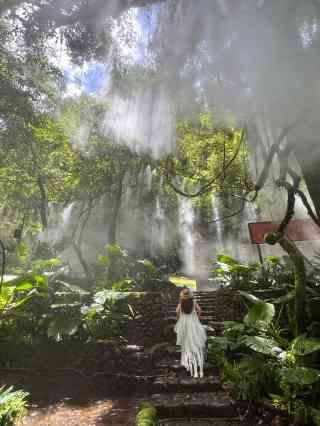
Dehua Kiln Sites.
Tickets: Prices, Booking, and Tips
Visiting the Dehua Kiln Sites is a captivating experience for anyone interested in the rich history of porcelain craftsmanship. Here’s what you need to know about ticket prices, booking options, and helpful tips for making the most of your visit.
Ticket Information
- Admission Price: Entrance to the Dehua Kiln Sites is generally free, making it an accessible attraction for all visitors. However, some specific workshops or guided tours may charge a small fee, typically ranging from 20 to 50 CNY (approximately $3 to $7 USD).
- Discounts: Students and seniors often receive discounts, so be sure to bring identification if applicable.
Booking Options
- Guided Tours: While tickets may not be necessary, consider booking a guided tour in advance. These tours often include demonstrations of traditional porcelain-making techniques and provide in-depth knowledge about the history of the kilns. Many local ceramic factories offer packages that combine a factory visit with a tour of the kiln sites.
- Online Reservations: For those interested in specific workshops or events, check local tour operators or the official websites of the ceramic factories. Booking online can help secure your spot and ensure a smooth experience.
Tips for Visiting
-
Plan Your Arrival: The Dehua Kiln Sites are located in a schoolyard, which may be a bit tricky to find. Use GPS or ask locals for guidance to ensure a hassle-free journey.
-
Best Time to Visit: To avoid crowds, consider visiting during weekdays. Early mornings or late afternoons are ideal for capturing stunning photographs without too many distractions.
-
Photography: Feel free to take photos, as the kilns and surrounding landscapes offer numerous picturesque backdrops. Just be considerate of any signage or guidelines regarding photography in certain areas.
-
Wear Comfortable Shoes: Exploring the sites often involves some walking on uneven terrain. Comfortable footwear will enhance your experience as you navigate through the historical sites.
-
Combine with Other Attractions: Dehua County is rich in cultural and natural sites. Consider pairing your visit to the kiln sites with nearby attractions like the Dehua Ceramics Museum or Jiuxian Mountain for a more comprehensive experience.
-
Local Cuisine: Don’t miss the chance to indulge in local delicacies. After your visit, try nearby restaurants to savor authentic Fujian cuisine.
With its unique blend of history, culture, and craftsmanship, the Dehua Kiln Sites promise an enriching experience for every visitor. Whether you’re a ceramic enthusiast or just looking for a unique travel destination, Dehua is sure to impress.
How to Get There: A Complete Transportation Guide
Getting to the Dehua Kiln Sites is a journey through the scenic beauty of Fujian Province, where porcelain culture thrives against a backdrop of stunning landscapes. Here’s your complete guide on how to reach this historical treasure.
Arrival by Air
Nearest Airport:
The closest major airport to Dehua is Quanzhou Jinjiang International Airport (JJN), approximately 60 kilometers away. This airport connects well with several major cities in China, including Beijing, Shanghai, and Guangzhou.
Getting from the Airport to Dehua:
Once you land at Jinjiang Airport, you have a couple of options to reach Dehua:
-
Taxi:
Taxis are readily available at the airport. A direct ride to Dehua will take about 1.5 hours and cost around 200-300 RMB, depending on traffic. -
Bus:
You can take a bus from the airport to Quanzhou city center and then transfer to a bus heading to Dehua. This option is more economical but may take longer due to transfers and waiting times.
Train Travel
If you prefer train travel, Quanzhou Railway Station is your best bet. From major cities like Xiamen or Fuzhou, you can take a high-speed train to Quanzhou. The journey from Xiamen takes about 1 hour and from Fuzhou around 2 hours.
From Quanzhou Railway Station to Dehua:
Once in Quanzhou, you can:
-
Take a Bus:
Head to the local bus station and catch a bus to Dehua. Several services operate throughout the day, with a travel time of about 1.5 to 2 hours. -
Hire a Taxi:
For a more comfortable and direct option, taxis are available outside the station. Expect to pay around 200 RMB for the journey.
By Road
For those who prefer to drive, renting a car provides the freedom to explore the region at your own pace. Here’s a quick breakdown:
- From Xiamen: The drive takes approximately 2 hours via G324 and G204, covering a distance of about 120 kilometers.
- From Fuzhou: It’s around a 3-hour drive, roughly 180 kilometers, taking G322 and G204.
Ensure you have a GPS or a navigation app handy, as road signs may be in Chinese.
Local Transportation
Once you arrive in Dehua:
-
Taxis and Ride-Hailing Apps: Local taxis are available, and popular ride-hailing apps like Didi are operational, making it easy to get to the Dehua Kiln Sites and other attractions.
-
Walking: The Dehua Kiln Sites are located in Baomei Village, which is accessible on foot from nearby restaurants and accommodations.
Important Tips
- Language: English may not be widely spoken, so having a translation app or a phrasebook can be very helpful.
- Cash: While some places accept cards, it’s advisable to carry cash (RMB) for smaller purchases or local transport.
- Opening Hours: Check the opening hours of the Dehua Kiln Sites before your visit to ensure you have ample time to explore.
With these transportation options and tips, your visit to the Dehua Kiln Sites will be both enjoyable and memorable, allowing you to immerse yourself in the rich porcelain heritage of this remarkable region. Safe travels!
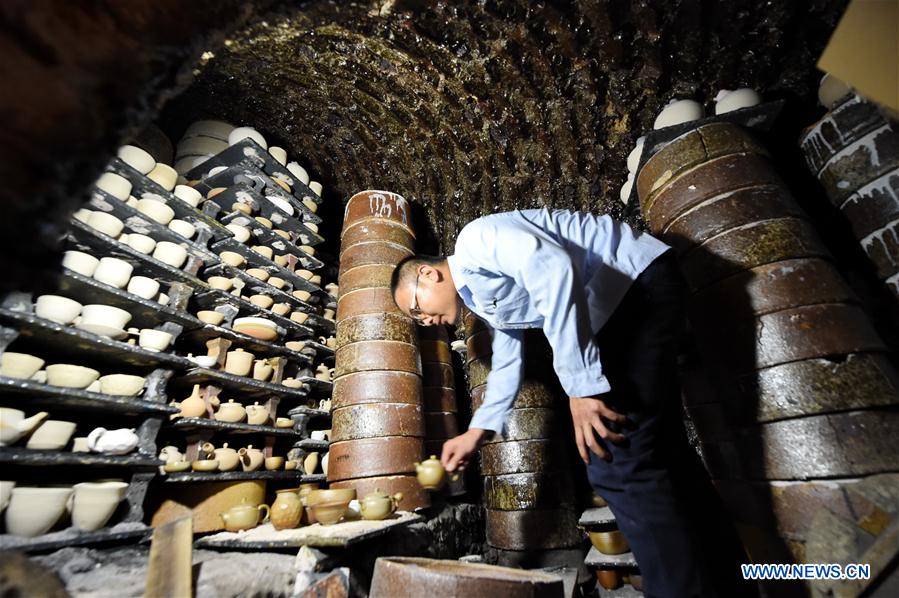
Dehua Kiln Sites.
Local Cuisine and Accommodation Nearby
Exploring the Dehua Kiln Sites is not only a journey through the rich history of porcelain but also an opportunity to indulge in the local flavors and find comfortable accommodations nearby. Here’s a guide to help you experience the best of Dehua County.
Local Cuisine
-
PaPa ZhenWei (爸爸珍味)
Just a short stroll from the Dehua Kiln Sites, this local gem offers a delightful array of traditional Fujian dishes. Known for its fresh seafood and hearty soups, PaPa ZhenWei is a must-try for travelers seeking authentic flavors. Don’t miss their signature fish ball soup and stir-fried local vegetables, which perfectly showcase the region’s culinary heritage. -
Cha WuYu (茶窝鱼)
Located about a mile from the kiln sites, Cha WuYu specializes in freshwater fish dishes that are a favorite among locals. The restaurant prides itself on using only the freshest ingredients, and their fish hot pot is particularly popular. The cozy atmosphere and friendly service make it a perfect spot to unwind after a day of exploring.
Accommodation Options
-
Dehua County Hotel (德化县酒店)
For visitors looking for convenience and comfort, the Dehua County Hotel is an excellent choice. Situated close to the kiln sites, this hotel offers well-appointed rooms with modern amenities, ensuring a restful stay. The on-site restaurant serves a variety of local dishes, adding to your culinary experience. -
Yunlong Valley Hotel (云龙谷酒店)
Nestled in the scenic Yunlong Valley, this hotel combines nature with comfort. It’s a little further from the kiln sites but offers breathtaking views and a tranquil environment. The hotel features spacious rooms, a beautiful garden, and easy access to hiking trails. Enjoy breakfast with a view, and then set off to explore the area’s rich ceramic culture. -
Dehua International Hotel (德化国际酒店)
For those seeking a more upscale experience, the Dehua International Hotel provides luxury accommodations with all the modern conveniences. Located just a short drive from the kiln sites, it boasts elegant rooms, a fitness center, and an exquisite restaurant that serves a fusion of local and international cuisines.
Final Tips
When planning your visit, consider sampling some local delicacies such as Buddha Jumps Over the Wall (佛跳墙), a famous Fujian dish, or trying Oyster Omelette, a beloved street food. Make sure to book your accommodations in advance, especially during peak travel seasons, to secure the best options.
With a rich tapestry of flavors and comfortable places to stay, your journey to the Dehua Kiln Sites will be both memorable and fulfilling!
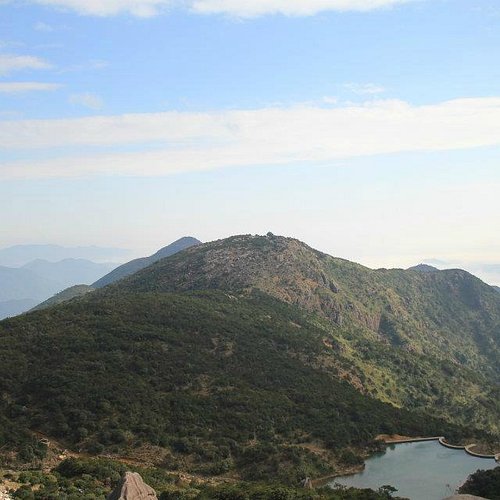
Dehua Kiln Sites.
Frequently Asked Questions
Frequently Asked Questions
-
Where is the Dehua Kiln Site located?
The Dehua Kiln Site is situated in Baomei Village, Xunzhong Town, Dehua County, Fujian Province, China. It’s accessible from major cities like Quanzhou, making it a convenient stop for travelers interested in porcelain culture. -
What are the opening hours for the Dehua Kiln Site?
The site generally operates during regular business hours, but it is advisable to check in advance as hours may vary depending on local events or holidays. -
Is there an entrance fee to visit the kiln site?
Entry to the Dehua Kiln Site is often free, but it’s best to verify this before your visit in case of any changes or special exhibitions. -
Can I take photographs at the Dehua Kiln Site?
Yes, photography is permitted at the site, so feel free to capture the intricate details of the dragon kiln and the beautiful porcelain pieces on display. -
What is the best way to get to the Dehua Kiln Site from Quanzhou?
You can reach the Dehua Kiln Site by taking a bus or hiring a taxi from Quanzhou. The journey typically takes about 1.5 to 2 hours, depending on traffic conditions. -
Are there facilities available at the kiln site for visitors?
Basic facilities such as restrooms and signage are available at the Dehua Kiln Site. However, it’s a good idea to bring water and snacks, as options may be limited nearby. -
What else can I do in the area after visiting the kiln site?
After exploring the kiln site, consider visiting the nearby Dehua Ceramics Museum to learn more about the history and craftsmanship of Dehua porcelain. You can also explore the beautiful landscapes of Jiuxian Mountain or Shiniu Mountain National Geopark. -
Is there any English signage or guided tours available?
Yes, the Dehua Kiln Site features signage in English, and some local guides may offer tours in English. It’s recommended to inquire ahead if you prefer a guided experience to fully appreciate the historical context of the site.
Final Thoughts on Your Trip
As your journey through the enchanting world of Dehua comes to a close, reflect on the delicate artistry that has flourished in this region for centuries. From the ancient dragon kilns nestled within schoolyards to the serene landscapes that inspired countless ceramic designs, each moment spent here unveils a rich tapestry of history and culture.
The Dehua Kiln Sites allow you to connect with a legacy that transcends time, offering a unique glimpse into the craftsmanship behind the exquisite blanc de Chine ceramics that captivated collectors worldwide. As you leave, take with you not just the memories of stunning porcelain, but the stories of the artisans and the land that nurtures their creativity.
Whether you’re a ceramics enthusiast, an avid traveler, or simply someone with a curious spirit, Dehua invites you to return. There’s always more to discover in this porcelain capital, where every visit deepens your appreciation for the artistry and traditions that make it truly special. Safe travels, and may your next adventure be just as inspiring!